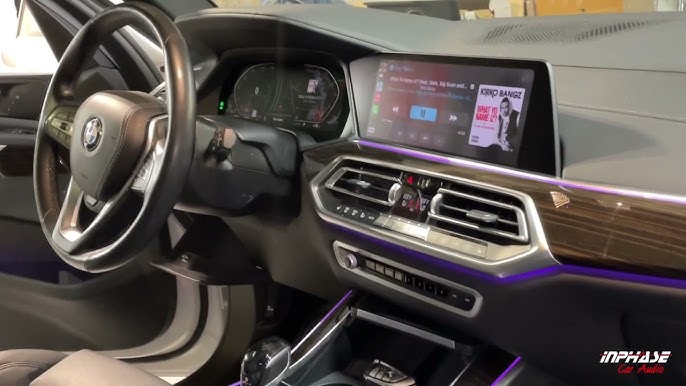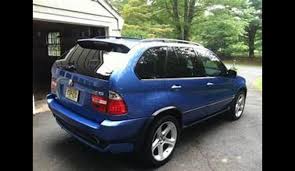The BMW X5 4.8is (E53) is a powerhouse of a luxury SUV, combining style, performance, and comfort. But one area that often leaves enthusiasts underwhelmed is the factory speaker system. Whether you have the standard Hi-Fi system or the upgraded DSP setup, you may have noticed muddy bass, weak mids, and dull highs — especially as the system ages.
In this blog post, we’ll walk through a complete BMW X5 4.8is speaker upgrade, including recommended speaker brands, installation steps, wiring tips, and final results.
🔍 Why Upgrade Your X5 4.8is Speakers?
BMW’s original E53 sound system was great for the early 2000s, but today’s audio standards have evolved. Upgrading your speakers delivers:
- ✅ Clearer vocals and highs
- ✅ Stronger midrange
- ✅ Tighter, cleaner bass
- ✅ Better compatibility with modern amps, DACs, and audio sources
🛠️ Recommended Speaker Kits
Here are the most popular and proven speaker upgrade options for the X5 4.8is:
🎶 1. Bavsound Stage One Kit
- Plug-and-play for BMWs
- OEM fitment — no cutting or drilling
- Silk dome tweeters and woven fiberglass cones
- Great for those retaining factory amp or head unit
🔊 2. Focal Integration Series
- Exceptional clarity and brightness
- Requires some mounting adapters
- High efficiency – works well with factory amp or aftermarket DSP
🔊 3. Morel Maximo / Hybrid Series
- Warm, detailed sound with excellent bass
- Ideal for upgraded amplifier setups
- Requires mild custom mounting
📦 What You’ll Need
- 6.5″ components for front doors
- 4″ midrange for rear doors
- Tweeters for front door sails
- 8″ woofers under front seats (if applicable)
- Optional: amplifier or DSP unit (e.g., Helix, AudioControl, JL Audio)
Tools:
- Panel removal tools
- Torx screwdrivers
- Sound-deadening material (optional but recommended)
- Soldering iron or crimp connectors
- Tesa tape / zip ties for clean install
🔧 Installation Walkthrough
Step 1: Disconnect Battery
Always disconnect the negative battery terminal before working with electronics.
Step 2: Remove Door Panels
Use trim tools to remove the front and rear door panels. Carefully disconnect the window switch and speaker harnesses.
Step 3: Remove and Replace Factory Speakers
Unbolt the factory midrange speakers and tweeters. Install your new components using the included brackets or custom MDF adapters.
🔧 Pro Tip: Use foam speaker rings or sound-deadening to improve acoustics and eliminate door panel buzz.
Step 4: Install Underseat Woofers (Optional)
If upgrading underseat subs, remove front seats and lift the carpet to access speaker enclosures. Replace with 8″ shallow-mount subs or OEM-style replacements.
Step 5: Connect Everything
Solder or crimp connections securely. If using a crossover network, mount it in the door or kick panel area and route wiring neatly.
Step 6: Test the System
Before reassembling panels, reconnect the battery and test the system. Check for polarity, clarity, and any distortion.
🔊 Sound Quality After the Upgrade
After upgrading the speakers, the X5’s cabin transforms into a concert hall on wheels. You’ll notice:
- 🎶 Much crisper highs and detailed vocals
- 💥 More impactful bass, especially with new woofers
- 🎧 Balanced soundstage, even at high volumes
- 🎵 Enhanced music enjoyment, whether it’s classical, hip-hop, or podcasts
🎯 Final Thoughts
Upgrading the speakers in your BMW X5 4.8is is one of the most impactful mods you can do for daily comfort and driving pleasure. With the right components and a weekend of work, your E53 will sound better than cars twice its age and price.
📝 Meta Description
Upgrade your BMW X5 4.8is (E53) speaker system for cleaner sound, tighter bass, and modern audio performance. Full guide on DIY install, best speakers, and wiring tips.
💬 FAQs
Q: Do I need to replace the factory amp too?
A: Not necessarily. Many aftermarket speakers work fine with the stock amp, but a DSP + amp upgrade takes performance to the next level.
Q: Will new speakers fit without cutting?
A: Brands like Bavsound are plug-and-play. Others (Focal, Morel) may require brackets or adapters.
Q: Can I keep my OEM head unit?
A: Yes. Most upgrades are compatible, but adding a DSP helps fine-tune the audio signal.


